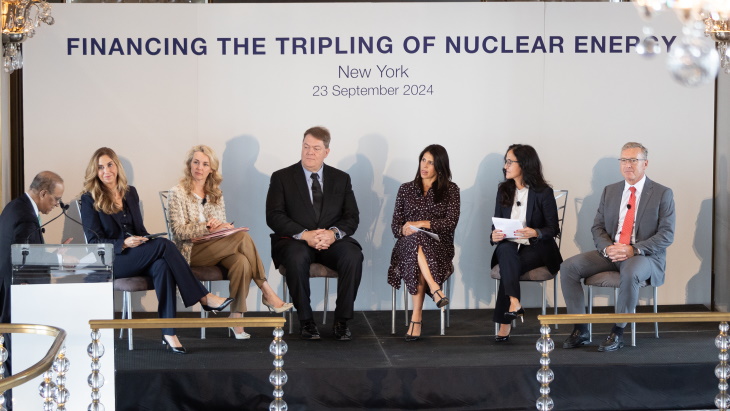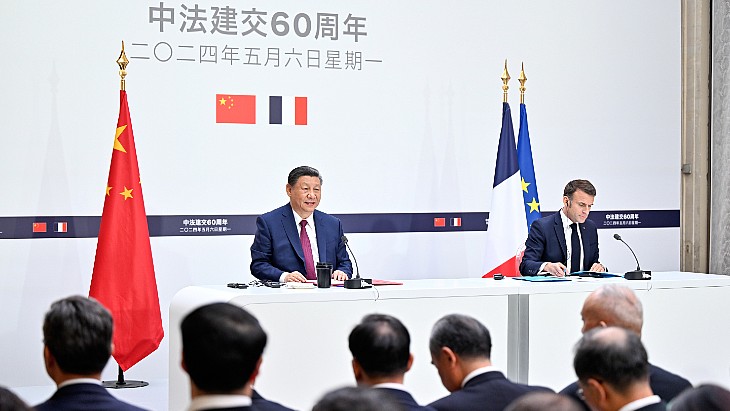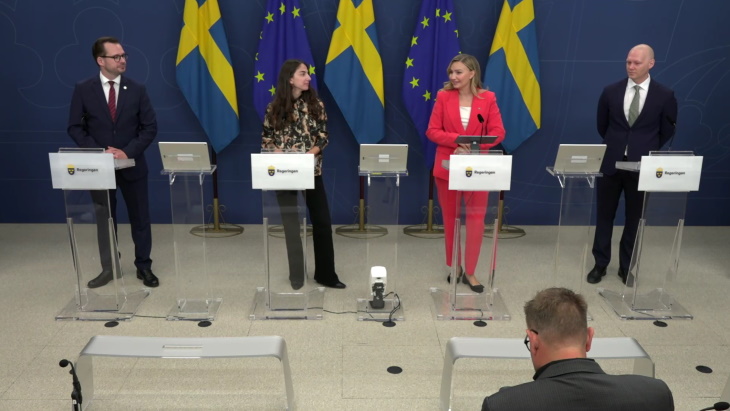Nuclear for US grid resilience and climate
 The US Nuclear Energy Institute has called on the Federal Energy Regulatory Commission to move quickly to define, foster and retain resiliency on the country's electricity grid before further nuclear generating capacity is lost through premature plant retirements. Meanwhile, the independent, non-partisan Center for Climate and Energy Solutions has issued a new report outlining how US policymakers can preserve the emission benefits of nuclear energy.
The US Nuclear Energy Institute has called on the Federal Energy Regulatory Commission to move quickly to define, foster and retain resiliency on the country's electricity grid before further nuclear generating capacity is lost through premature plant retirements. Meanwhile, the independent, non-partisan Center for Climate and Energy Solutions has issued a new report outlining how US policymakers can preserve the emission benefits of nuclear energy. The US Nuclear Energy Institute (NEI) has called on the Federal Energy Regulatory Commission (FERC) to move quickly to define, foster and retain resiliency on the country's electricity grid before further nuclear generating capacity is lost through premature plant retirements. Meanwhile, the independent, non-partisan Center for Climate and Energy Solutions (C2ES) has issued a new report outlining how US policymakers can preserve the emission benefits of nuclear energy.
 |
| C2ES launched its report at a live-streamed event held in Washington DC with a keynote presentation by Public Service Enterprise Group CEO Ralph Izzo. (Image: @c2es_org) |
FERC earlier this year launched a proceeding to examine the resilience of the US grid after terminating proceedings on a proposed rulemaking on grid resilience and reliability from US Energy Secretary Rick Perry. The proposed rulemaking would have recognised the attributes of generation sources able to store fuel on site, such as nuclear. FERC instead directed the regional transmission organisations (RTOs) and independent system operators (ISOs) - the bodies that operate the USA's power grid - to assess the resilience of the electricity grid and to recommend additional actions to mitigate any identified issues.
NEI yesterday filed comments on the response to FERC by the RTOs and ISOs, which was itself filed in March. In its filing, the organisation says the RTOs have not demonstrated that the grid is ready to handle an increasing reliance on gas-fired generation and have failed to assure FERC that the loss of nuclear generation to early retirement will not increase the resilience risk of the rush to gas.
NEI commissioned international consulting firm ICF to evaluate whether the grid can remain resilient given the increasing reliance on natural gas-fired generation in the PJM Interconnection RTO. PJM has previously said that it does not expect the closure of four nuclear power plants in Ohio and Pennsylvania to adversely impact the reliability of its transmission system.
The NEI said ICF's interim report, The Impact of Fuel Supply Security on Grid Resilience, "raises important questions about the vulnerability of several discrete clusters of generation in PJM to disruption of the gas supply and transportation infrastructure".
Ellen Ginsberg, NEI vice president, general counsel and secretary, said yesterday: "As short-term prices continue to drive the premature shutdown of nuclear power plants and take away significant amounts of zero-carbon electricity, it's imperative that FERC develop an in-depth understanding of how the increased reliance on gas could impact grid resilience."
The ICF study showed that transformation of the USA's generation fleet to be more reliant on gas had outpaced the framework for analysing the resilience implications of those changes, she said. It had also identified vulnerable 'clusters' of gas generation on the PJM grid. The potential loss of gas infrastructure must be also be factored into FERC and RTO determinations on grid resiliency, she noted.
"We strongly encourage FERC to take action to define, foster and retain grid resiliency, thereby preserving the fuel security offered by nuclear power plants under threat of premature closure. Closure is not a theoretical problem; the retirement process is already under way for several nuclear plants. That process does not - but must - analyse the risks of nuclear plant retirements from a fuel security perspective," she said.
C2ES sets out roadmap
Bob Perciasepe, president of Arlington, Virginia-based C2ES, yesterday said zero-carbon nuclear power, renewables and other non-emitting energy sources must all play their part in reducing carbon pollution.
"We can't afford to set aside any practical solution as our communities suffer the rising costs of climate change … Every nuclear site that prematurely closes makes the job that much tougher," he said.
Perciasepe's comments accompanied the release of C2ES's new report Solutions for Maintaining the Existing Nuclear Fleet, in which the organisation examines the market forces contributing to early retirements of US nuclear plants and identifies key policy solutions to maintain existing nuclear generation.
The report identifies targeted, state-level policies such as zero-emission credits (ZEC) already being implemented in some states as the best near-term option as they enable quick and direct support to distressed facilities.
"ZEC policies have withstood initial legal challenges in New York and Illinois, offering added confidence in their utility," C2ES said.
Expanding state electricity portfolio standards to include existing nuclear is identified as a "balanced, inclusive policy approach that allows nuclear and renewables to work together on an even footing to one another's benefit". Second licence renewals by the US Nuclear Regulatory Commission, which would allow reactors to operate for 80 years, would permit much of the existing nuclear fleet to continue to operate well beyond 2050, thus allowing new zero-carbon technologies including advanced reactors, fossil fuel with carbon capture, and renewables to enter service and avoid "backsliding" in emission reductions, the report finds.
A price on carbon could preserve existing nuclear, but it may not be sufficient if the price is too low, the report says, noting that carbon prices in California and the USA's north-east "did not prevent early nuclear retirements in those regions, most likely because they were too low".
A "meaningful price" on carbon implemented in power markets "would help level the playing field and provide additional revenue to non-emitting technologies like nuclear power and renewables," but the implementation of such a measure could be significantly delayed by the legal challenges it would be likely to attract, it said.
An increase in the use of power purchase agreements - contracts to procure electricity which give both buyers and sellers some certainty over a specified time period - should be pursued for nuclear power with government agencies, cities and businesses, the report found.
The report concludes that a long-term strategy for decarbonising the US economy must provide stronger support for advanced nuclear technology alongside increased use of renewables, and calls for a broad-based energy coalition to maintain existing nuclear capacity and promote new renewables and other technologies.
"Nuclear and renewable power must ally and focus on working together," the report notes.
C2ES is an independent, nonpartisan, nonprofit organisation working to forge practical solutions to climate change.
Researched and written
by World Nuclear News










_88592.jpg)

